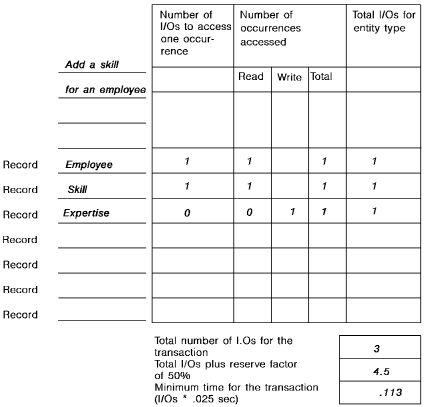

When you estimate I/Os for a transaction that performs update functions, you need to consider I/O operations that must be executed to ensure database integrity. In addition to the I/Os required to access desired entities, update transactions must perform I/Os to access related entities. Some types of integrity checking require that the system access other related entities.
Suppose you need to estimate I/Os for the following transaction:
Add a skill for an employee.
To protect the relationship between an EMPLOYEE entity and an associated EXPERTISE entity, the EMPLOYEE entity must be accessed before storing the EXPERTISE entity. Likewise, to protect the relationship between a SKILL entity and an associated EXPERTISE entity, the SKILL entity must be accessed before storing the EXPERTISE entity.
I/O estimates
Knowing this information, you can make the following I/O estimates for each entity accessed:
Estimating I/Os for a sample update transaction
A total of three I/O operations will be performed by this transaction, as shown below.

|
Copyright © 2014 CA.
All rights reserved.
|
|